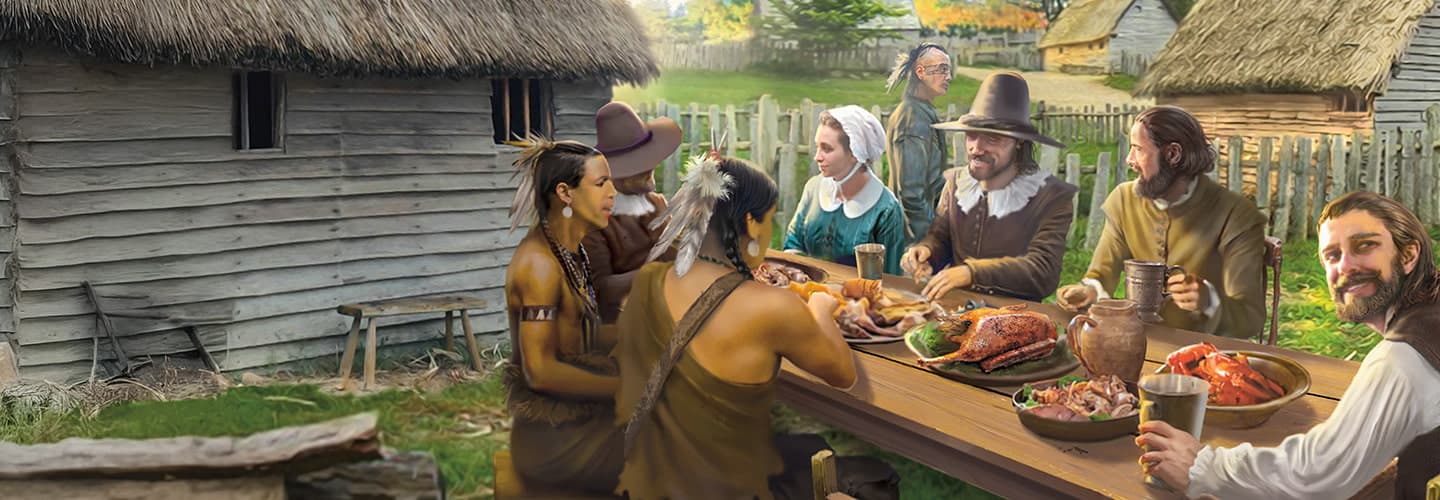In 1621, about 50 English settlers and at least 90 members of the Wampanoag (WAHM-pah-nawg) Nation gathered in what is now Plymouth, Massachusetts, to celebrate their successful fall harvest. The three-day feast is often called the first Thanksgiving. Here’s a look at how the holiday has changed over the years.

Illustration by Mark Fredrickson
A History of Thanksgiving
October 1789
Shutterstock.com
President George Washington declares Thursday, November 26, 1789, a day for Americans to give thanks. But Thanksgiving doesn’t become a yearly tradition until much later.
1846
GL Archive/Alamy Stock Photo
A magazine editor named Sarah Josepha Hale sets out to make Thanksgiving a national holiday. She spends years publishing essays and writing letters to lawmakers to try to gain support for her cause.
October 1863
Days after Hale writes to him, President Abraham Lincoln makes the holiday official. He declares the last Thursday in November a day of Thanksgiving to help “heal the wounds of the nation” during the Civil War (1861-1865).
November 1924
Gary Hershorn/Getty Images
The Macy’s department store holds its first Thanksgiving Day Parade in New York City. The parade begins as a way to promote the store’s Christmas sales. Over time, people come to think of Thanksgiving as the start of the holiday shopping season.
November 1934
Shutterstock.com
The Detroit Lions face the Chicago Bears in the first National Football League game broadcast (then on radio) on Thanksgiving.
October 1941
Congress sets the fourth Thursday in November as the official date for the holiday. Two years earlier, President Franklin D. Roosevelt had caused confusion by moving it to the third Thursday of the month.
November 1989
Shutterstock.com
Though past presidents spared turkeys from becoming dinner, George H.W. Bush is the first to give a bird an official pardon. Pardoning turkeys is still an annual White House event.
